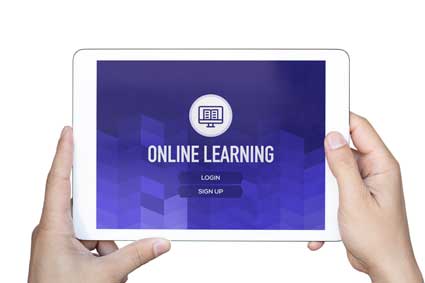By now you realize the importance of your business e-mails being concise. But what do you do if you need to send out a lengthy report or proposal? These documents can form the lifeblood of your business. Yet, how do you convey a great deal of information without boring your reader?
The answer lies in giving the information in easy-to-read, digestible chunks. Most important is the main e-mail that alerts your colleague or customer to the report, itself. There are three basic ways to send the report or proposal: by sharing it with them through a separate account (such as Google Docs or Smartsheet), by publishing it to a read-only URL, or by sending it as an attachment to your e-mail.
The method you choose depends on the accepted practice at your place of business, and on other factors, such as whether you would like your recipients to be able to edit the document and/or add comments.
In any case, the most important element of the report is the notification e-mail. This message will determine whether your report is viewed and read.
Your subject line is key. People are naturally suspicious of attachments. Since many computer viruses are transmitted through attachments, it is essential that your subject line be clear. Here are a few examples:
Board meeting minutes attached
Latest sales figures attached
Building renovations proposal attached
Since many of your colleagues and customers read e-mails on their mobile devices, it is courteous to convey your subject line message in 60 characters or less. One way to achieve this is with subject line abbreviations. Let's take a look at the most common code words.
-
EOM (End of Message). Use this abbreviation when your subject line conveys a complete message. If your readers see "Board meeting minutes attached [EOM]" as a subject line on a smartphone, they do not have to click into the message. They can view the attachment later at their convenience.
Compare that with this alternative, which offers no new information, but does take more of their time:
Subject line: Meeting minutes
Main message: Attached are the minutes from our Friday board meeting. Thank you.
-
NRR (No Reply Required). This code is a better version of FYI (For Your Information), as it explicitly states the reader does not need to respond. It relieves the recipient of the worry of that "should I" or shouldn't I" query. Here's an example:
Subject line: Conference agenda attached (NRR)
-
Y/N (Y es/No question). This abbreviation alerts respondents that you'd like a response. Perhaps you are seeking approval for minutes, or for a new marketing idea. By adding Y/N to your subject line, your report will have a better chance of getting a response.
Here is an example:
Subject line: Speaker line-up attached (Y/N)
Compare that with this alternative:
Subject line: Speaker line-up attached
Main message: What do you think of this speaker line-up? Please let me know.
-
RB+ [(Reply By (insert timeline)] or AB+ [Action By (insert timeline)]. An easy way to add a sense of urgency to your message is by adding a deadline. Need that report edited by tomorrow? You can add that timeline in the subject line with this abbreviation. (AB+1) means in one day. (RB+7) means in one week. If you need a response later today, add (RB+0) If you need a response in an hour, add (RB+0.1).
Here's how it works:
Subject line: Agenda attached for your approval (RB+2) (EOM)
-
PYR (Per Your Request). This abbreviation is a good one to use when you are sending a business proposal or work estimate that a colleague or client has requested. It helps your message stand out from other e-mails. In other words, you let your readers know up front that you are sending them something they want to see. Here are two examples:
Subject line: Website update proposal attached (PYR)
Subject line: Proposed winter class schedule attached (PYR)
The above abbreviation can be useful when the recipients are expecting a report and/or already know information about its contents. There are circumstances, however, when you will need to send a lengthier e-mail to explain a lengthy report or proposal. Perhaps you need to explain why you chose the format you used. Maybe you needed to break the proposal down into three segments, and you want your reader to know why you did that.
This important e-mail makes the difference between whether a report is opened and read, or ignored. As with all other business correspondence, follow the rules of etiquette.
An e-mail notifying a reader of a report or proposal should contain the following components:
-
the title or purpose of the report
Interested in learning more? Why not take an online Writing Effective Emails in the Workplace course?
-
essential points of the report
-
scope, methods, results, conclusions, and recommendations
-
response required, and timeline for that response
To help you decide what details to include in your notification e-mail, ask yourself the following questions:
a. What does my reader need to know before reading the report?
b. How can I best convey the purpose of the report?
c. What do I want the reader to do after reading the report?
d. What information do I need to include to enable my reader to take any needed action?
Do not send unnecessary attachments. If you are able to cover the relevant information in the body of a one-page e-mail message, do not attach a document with the same information.
Now let's consider the business document itself. The tone you use for the longer piece of business writing should be determined by its purpose. Think of what infinitive statement best fits your purpose. Here are some possibilities:
-
to inform
-
to persuade
-
to argue
-
to invite
-
to confirm
-
to ask a question, or series of questions
-
to seek approval
-
to approve
-
to reject
-
to propose
Your next step is to consider your audience carefully. Who is reading the report? Your superiors? Your customers? Your colleagues? The information you include will vary greatly, according to what your readers already know.
Most companies have a corporate or brand style that they follow. If you are unsure of the style, study the company's website, blog articles, social media, and marketing materials to get a feel for this style.
If you are seeking new business from a potential client, do some research to find out what information will be valuable to your reader. Keep in mind that the e-mail is about your readers' needs, not your own. Use details in your e-mail that convey how the report or proposal will directly benefit your reader. Here are some questions to ask yourself as you develop the report:
-
Why should my reader care about this report or proposal?
-
How will my reader benefit?
-
What should my reader do?
-
When should the reader do this action?
-
Are there results, if the reader does not take action?
-
What are those results?
-
Have I included only essential material?
-
Can I delete any unnecessary information?
-
How can my reader obtain more information?
-
Have I provided those details?
A formal business report usually has the following sections:
1. Title page. This front page includes the title of the report, the author's name, the company name, and the date.
2. Contents. This page shows content sections, subsections, and corresponding page numbers.
3. Summary. This is a one-paragraph description of the report. It includes the purpose of the report, how the research was conducted, the results, the conclusion, and key recommendations. The summary is sometimes called "the abstract."
4. Introduction. This part of the report discusses the importance of the subject, as well as some background information about the issue. It is usually several paragraphs in length.
5. Procedure. This section explains the resources and the methods the writer used to gather the information.
6. Findings. In this section, the writer explains what information has been discovered through the course of the procedures. It included facts and data and may include graphs and tables to illustrate the information.
7. Discussion. Here, the writer gives an interpretation of the findings of the report.
8. Conclusion. The writer uses the findings to offer an opinion, or to evaluate what has been learned or experienced.
9. Recommendations. Here the writer proposes a specific course of action, or suggests a way to solve a certain problem that has been discussed in the report. These ideas can be short-term or long-term solutions.
10. Appendices. In this section, the report writer includes other helpful information that can help support the report findings.
A business proposal e-mail
A proposal e-mail is an important piece of business correspondence that follows a discussion with a potential customer. It is a written statement of the specific business arrangements you have discussed.
Send a proposal e-mail after you have met with the customer in person, or communicated by phone or e-mail about what product or service you will provide, how long it will take, and what the cost will be fore the potential patron. A proposal e-mail should have the following structure:
-
A brief statement of thanks
-
A one- to two-sentence definition of the job or project
-
One or two sentences on the desired outcome of the project
-
Your proposed solution in three to five sentences
-
Your proposed price (one sentence)
-
Other details about the project, including clean-up, risk reduction, etc. (one to two sentences)
-
Scheduling details and timeline
-
Another brief thank you
As with all your business e-mails, strive for a friendly, yet professional and courteous tone. Avoid adding more information than what you discussed, and keep the sales pitch low key. Remember, this letter is following some initial contact.
The customer already knows something about you and your company. Don't sell yourself too hard, or you could turn the potential customer off.
Concentrate on being simple and straightforward. If the proposal is very detailed, or if it involves multiple projects, you can refer the customer to an attached document.
Don't let the length of a business report or proposal overwhelm you. When you look at the project from the recipient's point of view, it will help you organize your material in a user-friendly way that will make your message one that is easy to read and understand, and one that invites a response.





























